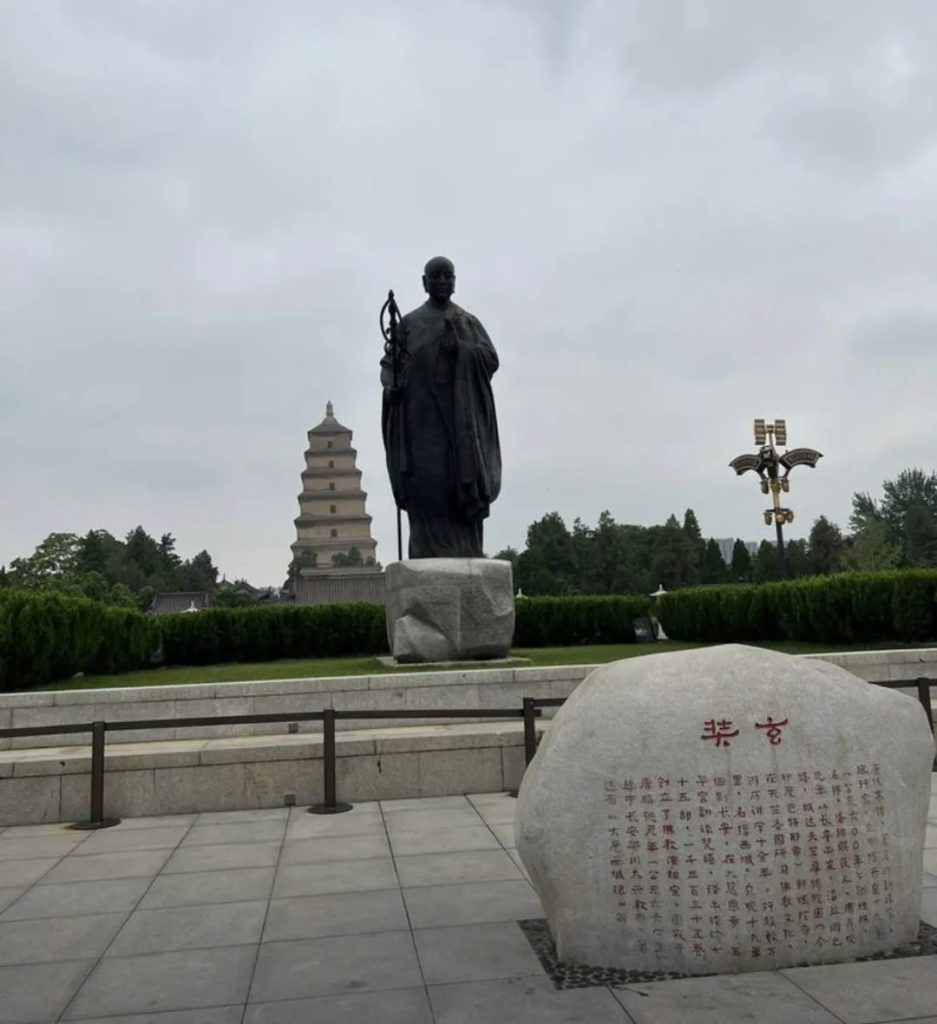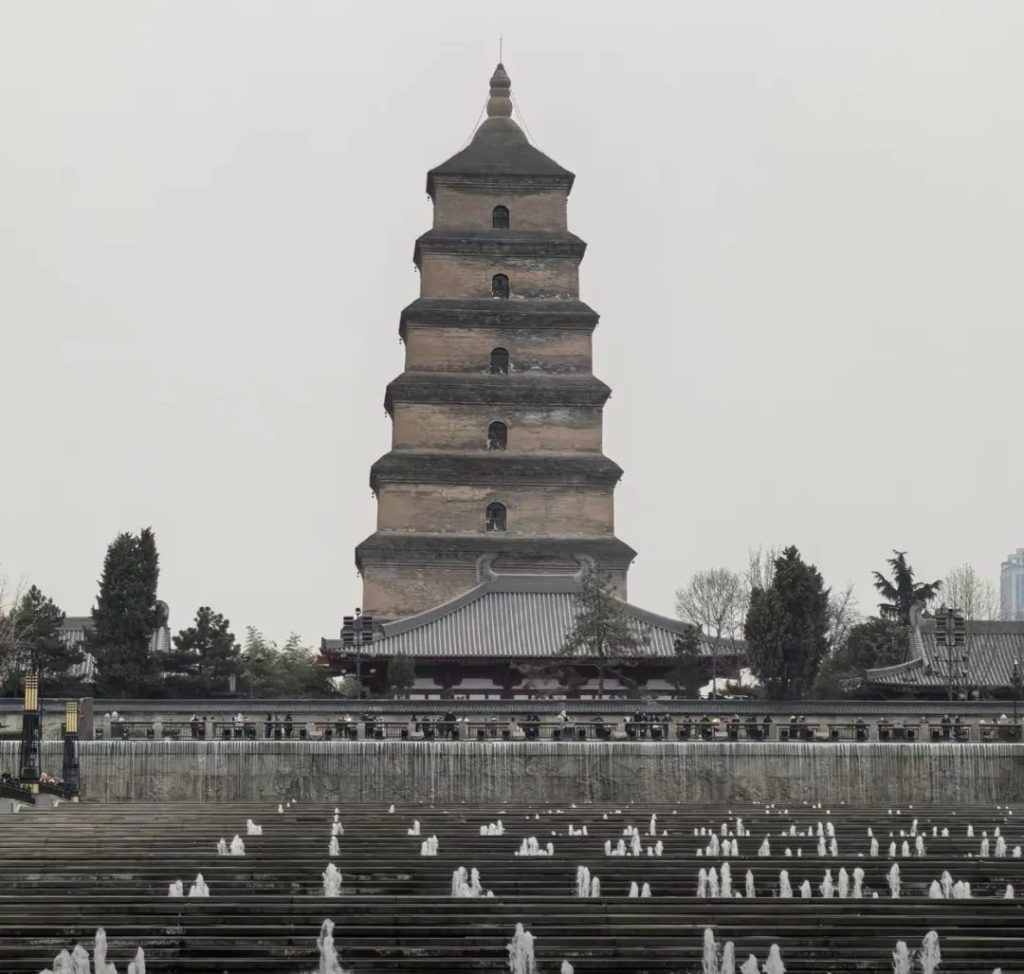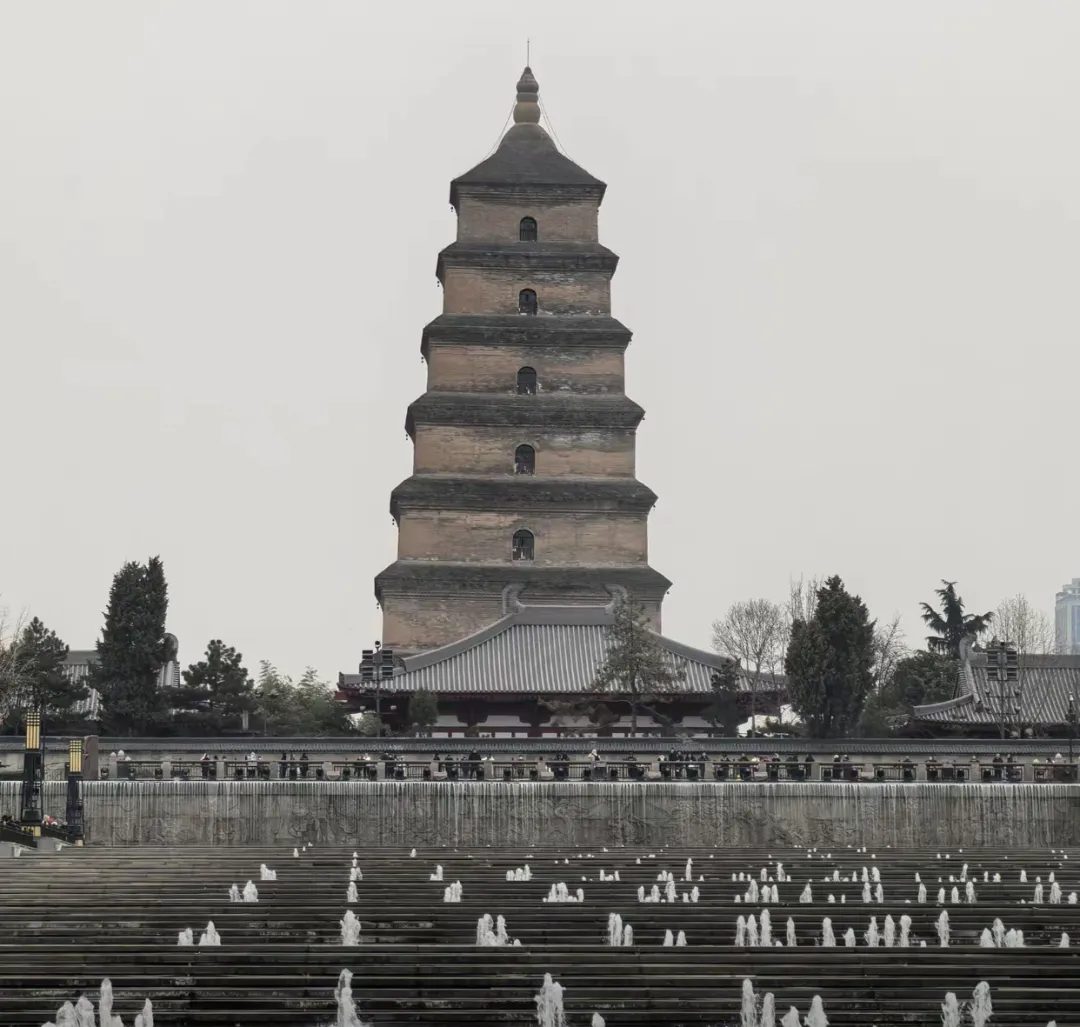In the south of the ancient city of Xi’an, you can see a very famous Buddhist building, the Big Wild Goose Pagoda. It is not only the symbol of Xi’an, but also the treasure of Chinese civilization.
It is also called “Ci’en Temple Pagoda” and is located at No.3, East Square Road, Dayanta Street, Dayanta District, Xi’an City, Shaanxi Province, just inside the Da Ci’en Temple. The temple was located in Jinchangfang, Chang’an City of the Tang Dynasty (now the southern suburb of Xi’an).
Reasons and History of the Construction of the Big Wild Goose Pagoda
The construction was related to the Tang Dynasty monk, Venerable Xuanzang.Xuanzang was a very remarkable monk who traveled to India to obtain scriptures and brought back a large number of Buddhist scriptures, Buddhist statues and Buddhist relics.

In order to preserve these precious Buddhist relics, he personally presided over the construction of the Big Wild Goose Pagoda in 652.
At first, the Big Wild Goose Pagoda had only five floors, and its design was inspired by the pagodas of India, making it look simple and solemn. But the history of the Big Wild Goose Pagoda has not always been smooth, it has undergone many alterations and repairs.
Emperor Gaozong of the Tang Dynasty felt that the Big Wild Goose Pagoda did not harmonize well with the architectural style of Chang’an City, so it was raised to nine stories.
During the period of Wu Zetian, the Big Wild Goose Pagoda was raised to ten stories, making its architectural style even more magnificent.
However, due to war and age-old maintenance, the Big Wild Goose Pagoda has been destroyed many times.
Five Dynasties after the Tang Dynasty Changxing period, the Big Wild Goose Pagoda was restored to the current seven-story.

Ming Wanli thirty-two years, the Big Wild Goose Pagoda carried out large-scale maintenance and reinforcement, making it more durable.
The Big Wild Goose Pagoda is the earliest and largest surviving four-square pavilion-style brick pagoda of the Tang Dynasty, which is built in a unique architectural style, displaying the majesty and grandeur of Tang Dynasty architecture.
The tower is square and has seven floors, each of which is gradually divided to form a solid conical structure.
The square, arch, and railings of the pagoda are all made of green bricks imitating wooden structure, which is very exquisite.
Special exhibitions and offerings on each floor of the Big Wild Goose Pagoda
The first floor displays knowledge of the origin and development of pagodas, their structure and categorization, as well as calligraphic works by poets of the Tang Dynasty.
The second floor enshrines a gilded copper and gilt statue of Sakyamuni Buddha, a relic of the early Ming Dynasty, which attracts countless tourists and believers.

On the third floor are two precious Bayeux Sutras, which are inscribed with Sanskrit. These shell leaf sutras are a precious heritage of Buddhist culture and an important material for the study of ancient Sanskrit.

The fourth floor preserves the precious Buddha’s relics, which were presented by the presiding officer of the Xuanzang Monastery in India.
The fifth floor displays some replaced Tang bricks and Wind Tors. The wind dor is a decorative object on the ancient building, and the sound made by swaying with the wind is crisp and pleasing to the ear.
The sixth floor has an instrument for recording earthquakes.
The seventh floor is the highest place, where you can see the exquisite algal wells and the magnificent scenery of the ancient city of Xi’an from afar.
The Big Wild Goose Pagoda is not only a building, but also a witness to the prosperity of the Tang Dynasty and the perseverance of Venerable Xuanzang.
If you want to learn about the history of the Tang Dynasty and Buddhist culture, the Big Wild Goose Pagoda is definitely a place worth visiting.
